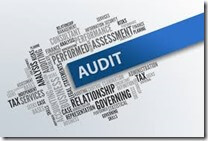1. Plan ahead – To be ahead of the curve, treat audit preparation as a year-long process. By keeping schedules and reconciliations up-to-date throughout the year, you can reduce the time it takes to prepare for the audit at the end of the year.
2. Stay up-to-date on accounting standards – You will want to stay up-to-date because you may need to manage or track data in a different way (for example, by updating documentation or reorganizing the chart of accounts) in order to implement new standards.
3. Assess changes in activities – Did the organization start a new program or receive a new grant? Are there any new reporting requirements? Such changes in activities may trigger accounting and reporting considerations that should be communicated to the auditor during the planning process.
4. Learn from the past – During the planning meeting with the auditors, discuss what went well during last year’s audit and where there may be opportunities for improvement or more effective communication between the organization and the auditors.
5. Develop timeline and assign responsibility – Review the list of workpapers and schedules requested by the auditors, making sure to obtain clarification of requested information when necessary. Make sure to allow adequate time for review and correction of schedules if necessary.
6. Organize data – Consider creating subfolders for significant transaction cycles or categories, such as cash, revenue and receivables, expenses and payables, investments, fixed assets, debt, etc. to make it easier to manage and retrieve schedules.
7. Ask questions – If an item requested by the auditor is unclear, ask for clarification prior to the start of fieldwork to avoid potential delays. Auditors are generally happy to answer accounting questions regarding unusual or infrequent transactions the organization may need assistance in accounting for.
8. Perform a self-review – Once all year-end closing entries are made, review schedules and workpapers to ensure amounts agree or reconcile to the trial balance. Take a step back and assess the overall financial statements for reasonableness.
9. Be available during fieldwork – Avoid key personnel scheduling time off during the audit, and consider rescheduling or postponing non-critical meetings for finance and accounting staff heavily involved with the audit.
10. Evaluate results – Maintain communication with the auditors during the time between fieldwork and the issuance of the audit report. If there are any open items at the end of fieldwork, establish agreed upon dates for the information to be provided to the auditors whenever possible.

“10 Steps to a Successful Audit.” AICPA, 31 Mar. 2016, www.aicpa.org/interestareas/notforprofit/resources/governancemanagement/ten-steps-to-a-smooth-audit.html.






